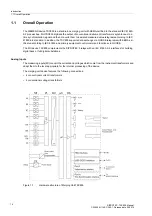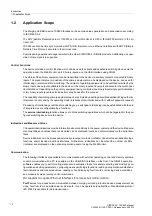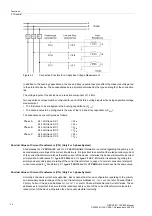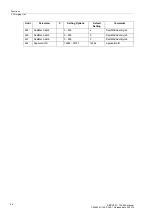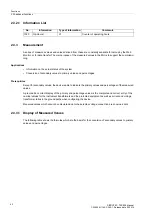
Functions
2.1 General
SIPROTEC, 7SC805, Manual
C53000-G1140-C380-1, Release date 05.2014
28
2.1.3
Oscillographic Fault Records(Waveform Capture)
The Merging Unit 7SC805 features a fault record memory. It is used for
commissioning. It can be triggered by
indications from GOOSE message, CFC
and binary input. The instantaneous values for
i
A
, i
B
, i
C
, i
N
and v
A
, v
B
, v
C
, v
X
are sampled at intervals of 1.0 ms (at 50 Hz) and stored in a circular buffer (20 samples per cycle). The data is
stored for a set period of time, but not for more than 6 seconds. Up to 8 events
can be recorded in this buffer.
The fault record memory is automatically updated with every new event so that there is no acknowledgment for
previously recorded faults required.
2.1.3.1
Description
The data of a event record can be read out via the device interface and evaluated with the help of the SIGRA
4 graphic analysis software. SIGRA 4 graphically represents the data recorded during the event and also cal-
culates additional information from the measured values. Currents and voltages can be presented either as
primary or as secondary values. Signals are additionally recorded as binary tracks (marks).
If port F of the device has been configured correspondingly, a control centre can import and evaluate the event
record data via this interface. Currents and voltages are prepared for a graphic representation. Signals are ad-
ditionally recorded as binary tracks (marks).
The following measured values are recorded in the fault record:
Note
The signals used for the binary inputs can be allocated in DIGSI.
Phase Independent Ratio
Three Phase (Van, Vbn, Vcn) One Phase
V
A
Chnanel1 Voltage
V
B
Chnanel2 Voltage
V
C
Chnanel3 Voltage
V
x
Chnanel4 Voltage

